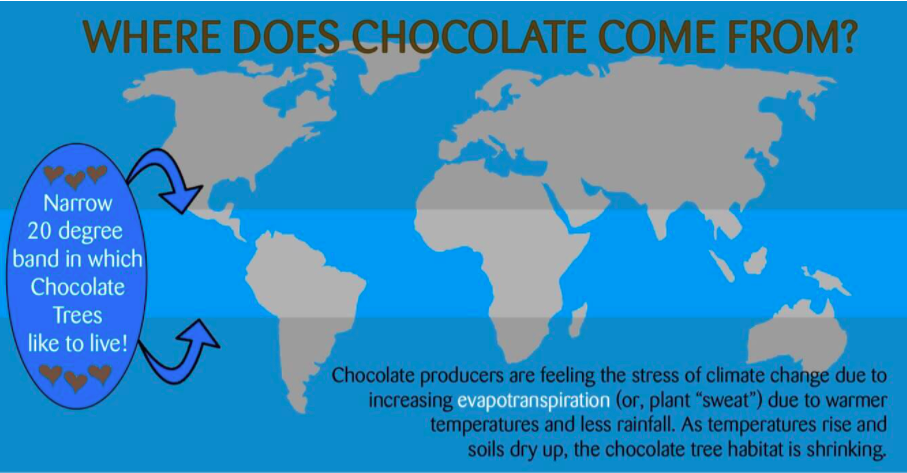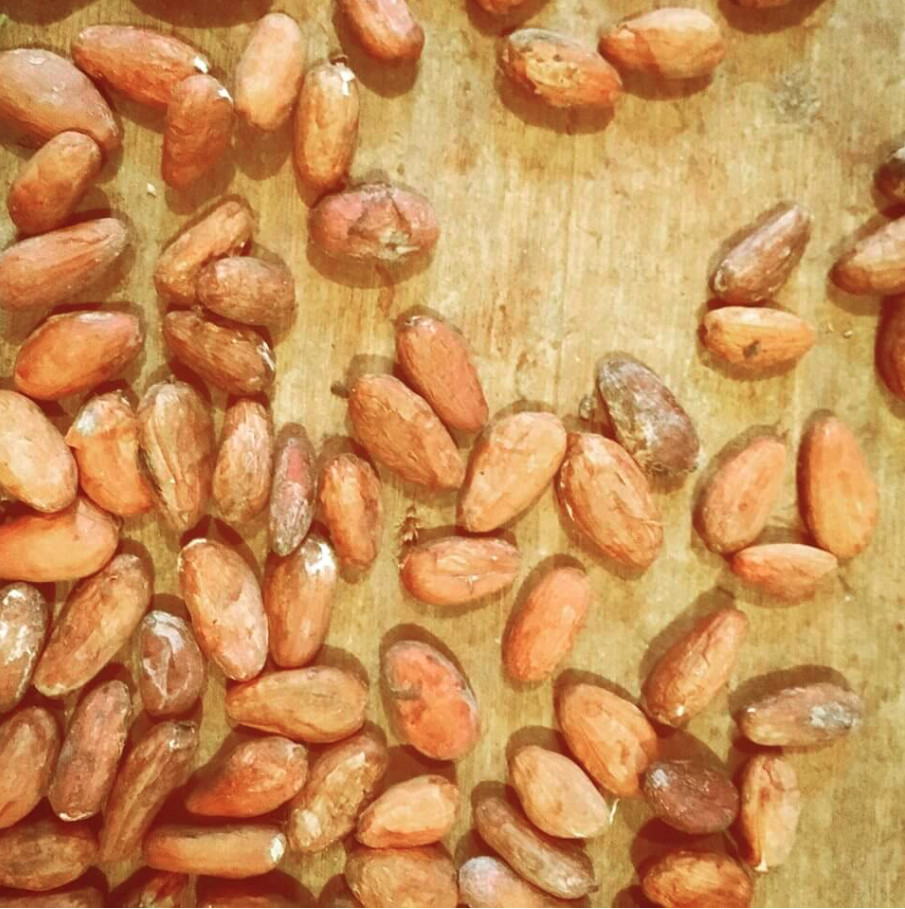Question Your World: How Does Climate Change Impact Chocolate?
Ah, yes, Valentine's Day ... when love is in the air. Well, love is not the only thing in the air. Scientists have been studying the amount of heat-trapping gases in the air and asking how this will impact the production of a very special Valentine's Day item: chocolate! Let's dig into this sweet topic for today's big question: How does climate change impact chocolate?
Hershey’s makes about 80 million chocolate “kisses” every day – nearly 29 billion a year, but where does that chocolate come from? The United States consumes nearly 18% of the world's chocolate. Over $18 billion worth of chocolates are consumed every year right here in the USA. So, where does all that chocolate come from anyway?

Cocoa trees, or Theobroma cacao, are pretty picky in where they want to live - and not like 2 bedrooms 2 full baths and garage-picky. The trees that give us the fruit that turns into our M&Ms and Hershey’s kisses basically can only grow within 20° latitude of the equator. Chocolate trees love warm, humid tropical rainforest climates – so countries like Ghana and Indonesia alone grow over half of the world’s chocolate. The full story of chocolate is pretty interesting in general, but the current status of chocolate production is especially fascinating to climate scientists.

Image credit: Getty Images
If you've never seen where chocolate comes from, here's what the open cacao fruit looks like. The white part is how they make white chocolate! The process is long and involved, but it's worth it, right? We're talking about chocolate, for cryin' out loud!
Scientists around the world agree that human emissions of heat trapping gases are warming the planet up, which has direct impacts on chocolate production. Climate change is a big concern for chocolate producers because a process called evapotranspiration – the loss of moisture through plants due to high temperatures – is increasing in these regions. As global temperatures rise, they basically squeeze water out of chocolate trees. These warming trends impact weather patterns, starving these areas of rainfall as well.
Some chocolate farmers are doing something we’d do as humans in this situation – they’re “Throwing Shade” on climate change. By planting or retaining taller trees in the rain forests, they can provide cooling to the chocolate trees and save them from high rates of evapotranspiration. Chocolate fans around the world could help out as well. While the farmers and chocolate producers have to worry about things like tall trees to help protect the world's chocolate producing zones, we American chocolate fans who live far away from those regions can help too. The more we curtail our contribution to heat trapping gasses, the more we will be helping those farmers as they try to offset their yield in the face of a changing climate.
Renewable energy, reduction of consumption that involves a large carbon footprint and other resiliency methods are a great way to begin to help the chocolate farms become more sustainable in these warming times in which we live.
While Valentine's Day may be a chance for a hot date, the chocolate industry has been seeing hotter and hotter dates on the calendar and are beginning to practice new resiliency methods, for the love of chocolate, of course.


